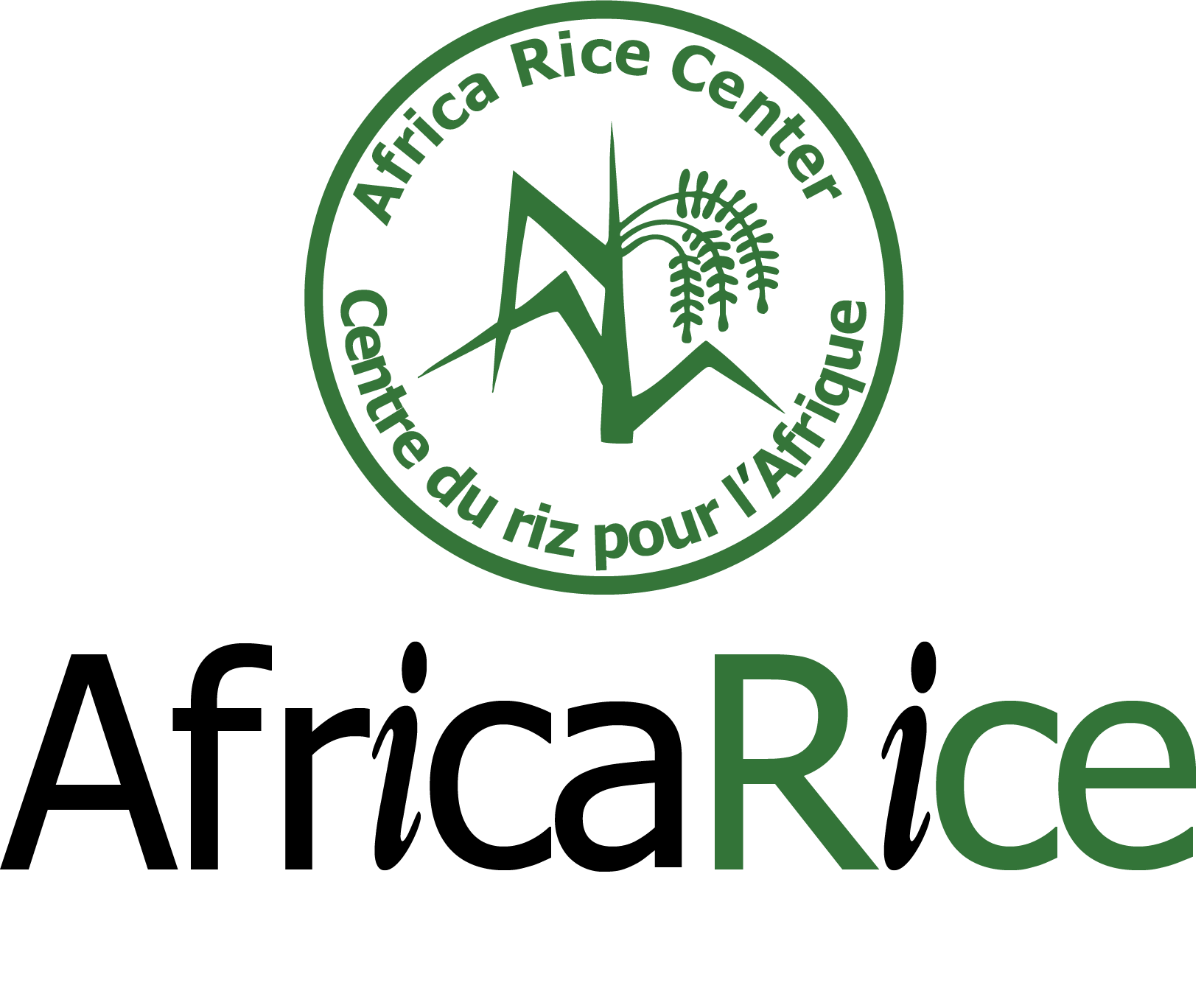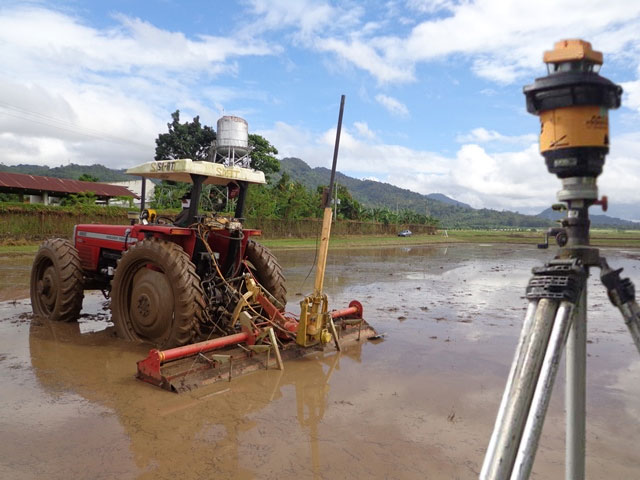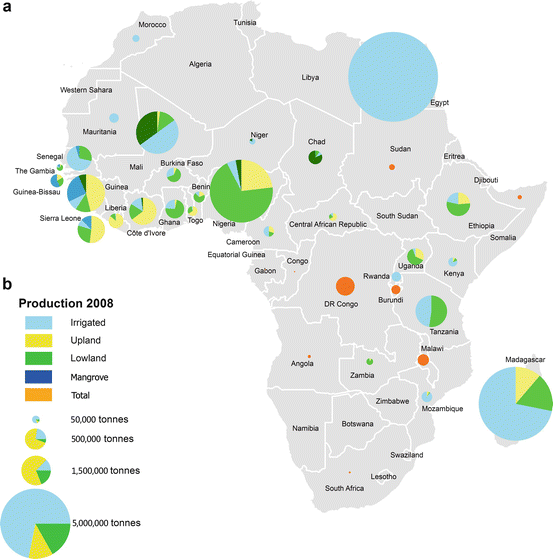Engineered irrigation surfaces and water lifting
Summary
The root zone of rice should be efficiently and uniformly supplied with water from rainfall or irrigation so that resources like energy, water, nutrient, and labour are conserved, and stresses on the crop avoided. Proper delivery and drainage of water on rice farms hence plays a crucially important role for obtaining satisfactory levels of crop production and input use efficiency. Uneven land surfaces that are full of soil clumps and depressions prevent the uniform movement of water and nutrients whereby creating unfavorable conditions and large variation of rice growth inside stands. Generally it is found that grain yields from rice paddies reduce with 260 kg/ha for every 10 mm of variation in land surface level. Flattening of soils and installing of furrows and embankments reduces the amount of water required for land preparation, improves seedling survival rates, saves on time to complete field operations and suppresses weed encroachment which makes that crops mature uniformly and can be harvested more easily. Leveling and engineering of land surfaces need to be closely aligned with the topography of paddy fields and carried out through minimal displacement of soil as it requires substantial labour investments of farmers. Rice paddies with appropriate surface designs also push up the cost-effectiveness of irrigation through water lifting from nearby basins or rivers into paddies using systems powered by gravity, manual labour or a motor.
About the Solution
Soil surfaces in rice paddies need to be shaped into a straight horizontal or sloping plane for water from rainfall and irrigation to be evenly distributed across crop stands. Levelling of the soil surface renders the greatest improvement of water supply and is the most widespread of all management interventions that is adopted by commercial rice growers in other parts of the world. Laser guided construction of level field planes in rice paddies greatly enhances maintenance of the soil moisture level and water use efficiency from the crop. In Cambodia and India, the soil engineering practice has shown to improve the germination rate for direct seeding, reduce total field labour by up to 30 person days, bring down weed infestations by up to 40%, and push up rice grain yields by 8 to 24%. Land leveling makes it possible to cultivate rice on larger sized paddy fields and promotes the use of mechanized farming since fewer embankments are needed to control movement of water. Irrigation of paddies with well-designed surfaces enables highly intensive rice production, and can increase the number of harvests to 2 or 3 per year in major African growing areas. When adopting fit-for-purpose surface designs and pumping systems farmers stand to earn large returns from investments on land levelling and water lifting that render the innovation financially viable for rice growers in low-income African communities.
Technologies for soil surface engineering and water lifting offer large opportunities to intensify rice production in all growing areas of SSA because they tackle shortfalls in land preparation and irrigation of paddies that plague traditional farming practices. The use of modern laser-guided leveling and irrigation systems is appropriate in lowland rice fields where uneven supply and low efficiency of water pumping reduce potential yields and profitability, as well as in upland paddies where intermittent supply of water through precipitation severely challenges crop production. A range of small and large sized equipment for soil surface engineering and water lifting are commercially sold that suit the diverse agricultural and economic contexts of farmers in SSA. Hand-powered pumping systems can be used for shallow and deep wells or surface reservoirs, but their reach is limited because low pressures are generated and large amounts of labour needed. Motorized or wind/animal-powered pumps operate at sufficiently high pressure and energy efficiency to lift water over distances of several kilometers and elevation differences of more than hundred meter.
Land leveling requires a low or high powered tractor depending on the volume of soil that needs to be moved, and specially designed add-on tools for displacing or harrowing earth that receive directions from laser-guided topographic surveying instruments. Skilled labour is needed to draw up practically and financially viable surface engineering strategies, and also to perform real-time land measurements and operate tractor-mounted equipment when doing the work on rice paddies. Available systems for water lifting make use of suction, piston and direct action pumps that are fitted for diverse agricultural settings and specific irrigation volumes. The energy to run motorized water lifting technologies can be drawn from portable fossil fuel generators, as well as small wind, hydro or solar power plants, and combustion or gasification of agricultural residues and other renewable biomass wastes that are abundantly available in remote farming communities.
Constructing engineered soil surfaces and land levelling is easiest to perform when rice paddies are sufficiently wet but can also be done under dry conditions. Preparatory steps involve ploughing the field from the center outwards (harrowing when dry), calibrating the topographic survey instruments and taking land measurements to design appropriate soil surfaces and plan soil movement. Tractor-mounted tools are then set up and levelling of fields carried out, after which another land survey is made to verify if the dimensions of soil surfaces are up to scratch. Soil surfaces typically do not have to be constructed anew for at least eight to ten years when a design is used that properly manages flows of water. The schedule and volume of water lifting into rice paddies is determined by the pattern and amount of rainfall, access to reserves in basins and rivers, and the production objectives of farmers. Commonly, there is need for additional irrigation just before and after planting rice crops, and at the critical stages of flowering and grain filling. Technologies for land levelling and water lifting can be made available to rice growers in SSA through collective investments or private contractors as a contracted agricultural service.
Commercialization
Commercially available
Solution Images
Institutions

Accompanying Solutions
Motorized weeders (cut and bury)


